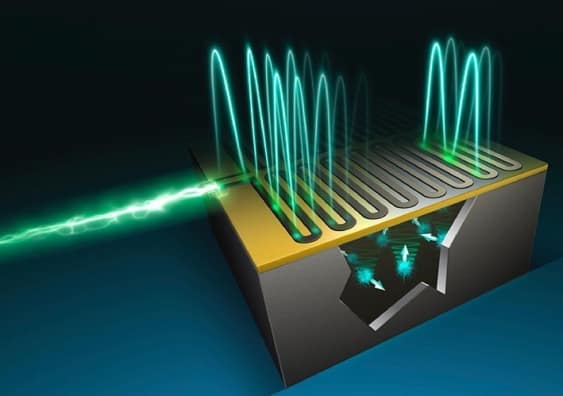
A team of quantum engineers from the University of New South Wales (UNSW) has developed a new tool for measuring the ‘spin’ of subatomic particles with an unprecedented level of accuracy. The device, which is over a million times more sensitive than conventional spin resonance spectrometers, could revolutionize the fields of chemistry, biology, physics, and medicine.
Elementary particles like electrons and protons have a property called “spin” that can be thought of as rotation around their axes.
The thing is, though, that particles like electrons and protons aren’t actually spinning like little tops or anything like that. Instead, spin is just a property that these particles have, a bit like how they have mass and charge.
And here’s where things get really interesting: particles like electrons and protons can only have certain values of spin. In fact, electrons can only have a spin of either “up” (+1/2) or “down” (-1/2), while protons always have a spin of +1/2.
This might seem like a weird and arbitrary thing, but it turns out that spin is really important in a lot of different areas of physics. For example, it’s crucial to understand how magnets work — the spin of electrons is what gives certain materials their magnetic properties. And in quantum mechanics, which is a branch of physics that deals with the behavior of very small particles, spin is one of the things that determine how particles can interact with each other.
This property is absolutely fundamental in nature and has been exploited in practical applications, ranging from magnetic hard disks and MRI machines to the quantum computers of the future.
According to Associate Professor Jarryd Pla of the UNSW, one of the lead researchers of the new project, by measuring spins it is possible to understand the structure and purpose of materials, which is crucial for designing better chemicals, drugs, and other products. However, conventional spectrometers require billions or trillions of spin measurements to generate accurate readings, making it difficult to measure microscopic samples, two-dimensional materials, and high-quality solar cells.
The team developed the ultra-sensitive device almost by accident while working on a quantum memory element for a superconducting quantum computer. They noticed that the device was exceptionally good at measuring spin ensembles with a level of accuracy never before achieved.
“We noticed that while the device didn’t quite work as planned as a memory element, it was extremely good at measuring the spin ensemble,” says Wyatt Vine, a lead author on the study. “We found that by sending microwave power into the device as the spins emitted their signals, we could amplify the signals before they left the device. What’s more, this amplification could be performed with very little added noise, almost reaching the limit set by quantum mechanics.”
Unlike previous super-sensitive spectrometers, which require multiple components and expensive refrigeration units, the UNSW device integrates several important parts of the spectrometer into a single chip. Moreover, it operates at temperatures ten times higher than in previous demonstrations, eliminating the need for a dilution refrigerator.
The UNSW team has patented the technology with a view to potentially commercializing it, which could allow other researchers to plug it into their existing systems to give them a significant sensitivity gain. The device has the potential to help chemists, biologists, and medical researchers who currently rely on tools made by large tech companies that work but could be much better.
The findings appeared in the journal Science Advances.









